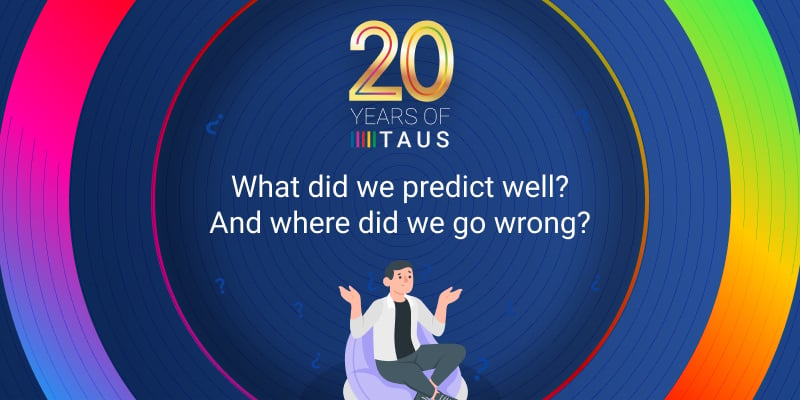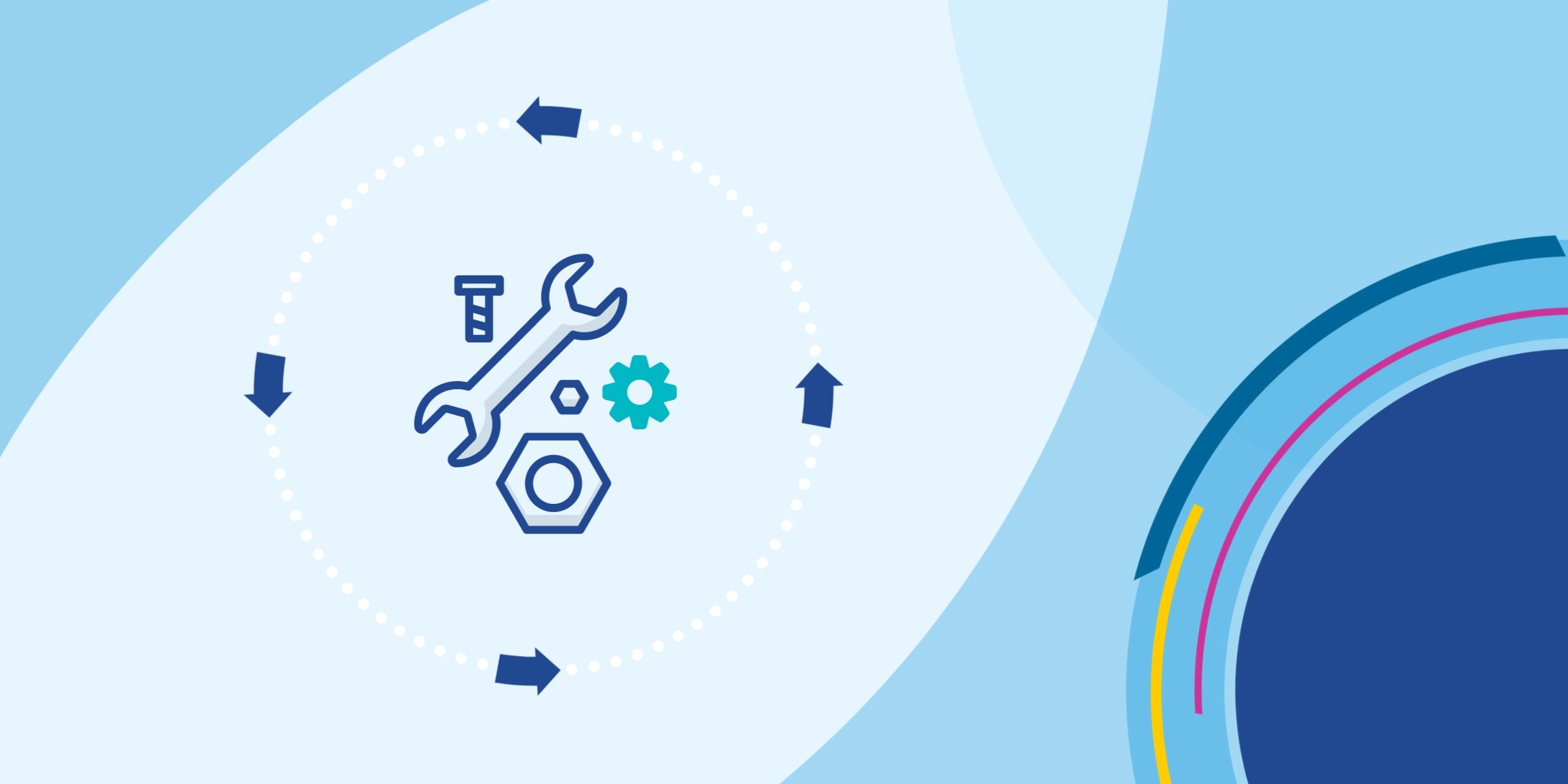The Localization Industry is Dead. Long Live Localization!

Discover how AI and innovation are transforming the localization industry and challenging traditional methods.
It’s been coming for a long time: the rise of AI and the end of the American century. The confluence of these two megatrends accelerates the evolution of the localization industry. Global markets are shifting and technology is challenging the foundation of our industry. This is a moment to rethink where we stand and determine new strategies.
The saying goes: never waste a good crisis. But can the localization industry turn this crisis into an opportunity and rise to new heights?
Unraveling the myths
Insiders in the industry have a hard time making the radical shifts that are necessary in a time like this. The changes they make are often just overlays on existing processes.
People have different ideas about the direction to follow. Customs and tools are hard to replace. The challenge in a time of crisis is to understand the new environment to its full extent.
Until we fully penetrate the myths surrounding us it is hard to make the right choices.
Myth 1: The end of finite translation capacity
The myth that is hard to eradicate in the localization industry is that translation will always be a human-centered service.
In economic terms a parallel market has emerged where translation is a zero-marginal cost process. This means that an infrastructure is created that can generate a virtual unlimited supply of translations at no (or near-zero) marginal costs. The classic service sector with its variable word-based cost structure is gradually replaced by digital product offerings with a fixed cost structure, apart from almost negligible variable energy costs).
To be concrete, the total output of the localization industry, estimated at around 1 billion words per day, is limited by the capacity of its workforce. In contrast, the MT platforms and all the LLMs together may already translate a trillion words per day and they are not hindered to expand their capacity, other than perhaps by constraints on infrastructure growth.
The extra service of having a human-in-the-loop for quality control is in specific use cases worth a premium, but not at all costs. (See article: The Translation Economics of the 2020s in Multilingual Magazine July 2021.)
Myth 2: The fallacy of humans versus machines
Despite what it looks like - a combat for life and death between humans and machines - I would argue that that narrative is not really helping the localization industry move forward.
It results in endless finger pointing, false starts and unclear strategies.
It is essential to understand that machines work very differently than the human brain and to acknowledge that humans have their shortcomings too. It’s time we realize that if there is anyone to blame for errors made by the machines, it is ourselves, because the machines are the tools made by us.
Humans have always invented tools to make their lives easier, their work less strenuous or solve otherwise unsolvable problems. The invention of AI is not different. AI works for us to (among other things) translate massive volumes of text at an incredible speed.
It is the mission of the localization industry, with all the knowledge and the linguistic data it has accumulated, to make the AI tools work better. As long as we are stuck in a metaphorical man-versus-machine debate progress will be slow.
Myth 3: Industries do not live forever
When the core transactions of an industry are standardized and automated that industry will lose its raison d’être. We have seen this happening in the banking industry for instance. With the foundation of SWIFT, money transfers became very simple and automated. Banks lost their core function and the fintech sector emerged with companies like Paypal, Stripe and Adyen spearheading innovation.
The same happened to travel, a booming industry in the 20th century. But when booking flights and hotels became simple and automated through the Sabre travel reservation platform, travel giants like Thomas Cook faced increasing competition from online platforms Expedia and Booking.com.
The localization industry finds itself now in the middle of what I called the Convergence Decade. The unlimited supply of automated translation attracts innovators from outside the sector. They will constantly challenge the position of the incumbents in the industry. As a result the localization industry will gradually dissolve and new leaders will emerge pushing localization to new heights.
Paving the way
Invaders in the localization industry have the advantage of starting with a clean sheet. They imagine Babelfish-like products without prejudice. Imagining a future without language barriers is the inspiration needed inside the localization industry to break the myths and very practically start paving the way for the future.
The three steps that I recommend are described here below:
Step 1 - Cut the waste (in the translation production process)
The price of on average $0.10 per word for a professional translation is high when the alternative of machine translation at almost zero cost is available.
Especially when the quality of machine translation is improving so fast.
Edit-distance statistics generally confirm that at least half of the MT’d segments are not touched by the post-editors. Quality Estimation technology is now available to automatically identify the good quality translations.
Applying this new technology immediately saves language service providers 50% on their MTPE costs. And further savings of 30% can be achieved if they also apply Automatic Post-Editing (APE) to the 50% of the MT output that obtained QE scores below the quality threshold. Project these savings on the whole industry and we are looking at a total amount of around $15 billion that’s wasted.*
Use EPIC Savings Calculator to check how much your business can save. (Scroll down on TAUS home page.)
Step 2 - Learn a new language
As everyone in the language space knows, that means stepping out of our comfort zone. To work with AI as our companion we need to learn to speak the language of the machines.
Today, model trainers in the localization industry tend to fall in the same trap as the first generation of MT developers. For almost half a century MT developers tried to teach the computers translation in the same way as humans understand translation: through grammar and dictionaries.
Until they discovered that computers do not understand our language the same way humans do. Their language is mathematical and data-driven. Just feeding the models with hundreds of thousands of post-edits without the logic that machines will understand is a counterproductive operation.
To avoid loss of time and loss of opportunities it is crucial to bring NLP knowledge into the organization. (See this post What is the Secret Behind Quality Estimation.)
Step 3 - Innovate and elevate
Localization made easy and automated becomes attractive for other verticals. Customers may become partners (or competitors) in this Convergence phase. New ventures will emerge shaking up the localization landscape.
Uber may want to mobilize and marry its massive multilingual online users population with AI models to deliver globalization services. Telus, Teleperformance and Cisco may see opportunities embedding localization in their CCaaS platform offering.
A better word to describe what is happening to the localization industry in this decade is Aufhebung, the concept that Hegel introduced to refer to the elimination process but then also immediately to the elevation in a higher degree of development.
Inside the industry several Aufhebung initiatives are already at play, like the LangOps movement, or GCSP as promoted by CSA Research. Just like the banking and the travel industries before, the localization industry will be released from its cage of a vertical sector and travel freely and horizontally.
Summary
Innovation is not just an idea or a new brand and marketing story. Innovation is very hard work, the result of constant testing and optimization. It is the result of an obsessive search for new value creation.
Often the best innovation ideas come from invaders disrupting an existing industry. Insiders in the localization industry will do best to forget everything they know (momentarily), learn the language of machines (AI) and imagine a new world with Translation out of the Wall.
References:
* Let’s assume that the localization industry produces 1 billion translated words per day at an average rate of $0.10 per word. That amounts to $36 billion per year, which seems about right in light of market size estimates of $70 billion and the assumption that 50% of the revenues come from translation services. RWS quoted in their 2024 annual report that 55% of their translations were produced by MT engines and then post-edited by their linguists (MTPE). Projecting this number on the whole industry tells us that $20 billion is invoiced to customers for MTPE, of which 50% to 80% can easily be saved using QE and APE.

Jaap van der Meer founded TAUS in 2004. He is a language industry pioneer and visionary, who started his first translation company, INK, in The Netherlands in 1980. Jaap is a regular speaker at conferences and author of many articles about technologies, translation and globalization trends.
 by Dace Dzeguze
by Dace Dzeguze

